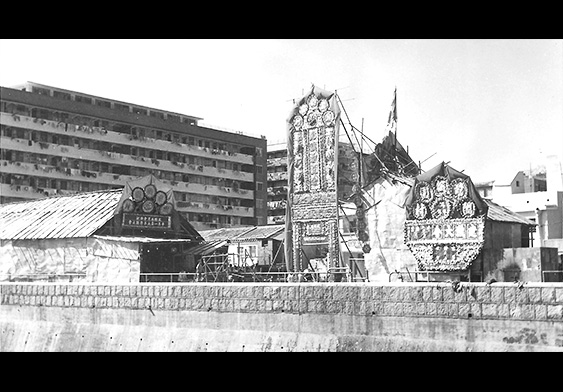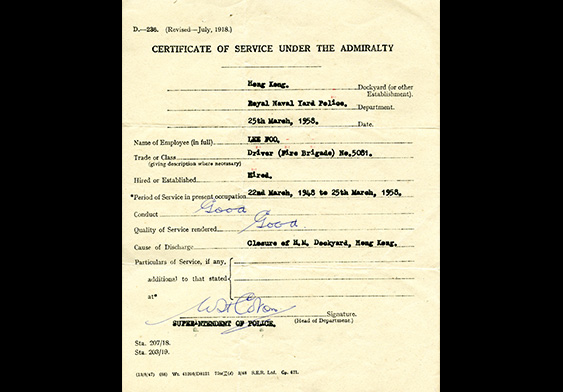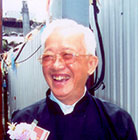
An ancestral home in 1st Lane
On the right of this picture from the 1966 Jiao Festival can be seen the whitewashed two-storey building that was Lee Foo’s ancestral house. The property collapsed during the Japanese colonial period but was reconstructed shortly after 1945.-Provided by Leung Shek Lun
An ancestral home in 1st Lane
On the right of this picture from the 1966 Jiao Festival can be seen the whitewashed two-storey building that was Lee Foo’s ancestral house. The property collapsed during the Japanese colonial period but was reconstructed shortly after 1945.-Provided by Leung Shek Lun

Working in the Naval Dockyard
Between 1948 and 1958, Lee Foo worked in Hong Kong’s Naval Dockyard. This picture shows his certificate of employment-Provided by Lee Foo
Working in the Naval Dockyard
Between 1948 and 1958, Lee Foo worked in Hong Kong’s Naval Dockyard. This picture shows his certificate of employment-Provided by Lee Foo
While moving out of the village was rarely painful, leaving home almost always was
In the 1960s, Lee Foo moved out of Nga Tsin Wai village with his family to the civil servants quarters. His mother and brother continued to live in Nga Tsin Wai until they sold their residence in the 1980s. After moving out, Lee Foo still had dinner in the village with his wife and children every day. His wife would pick up the children from school every afternoon, and helped with the chores and cooking in the village. They only returned to the quarters for sleep after they finished dinner. In 1980, Lee Foo’s family moved out of the civil servants quarters into their current unit in Choi Wan Estate. Lee Foo’s living condition has continually improved since he left the countryside many years ago. He did not have any adjustment problem. Houses in Nga Tsin Wai had no toilets, so the residents to use spittoons, and emptied them in early morning each day. There were toilets in the quarters and the estates, which greatly enhanced hygiene conditions. In the early years, residents of Nga Tsin Wai had to fetch bath water from the wells each day. After the completion of the seven-storey building nearby, people could boil tap water for their baths. When Lee Foo moved to the quarters and then the estate, he could boil water more easily by making use of liquid petrol gas and the gas stove.


 BACK
BACK  CLOSE
CLOSE 